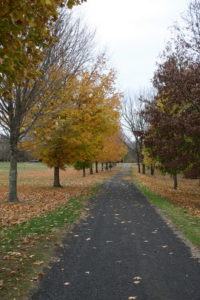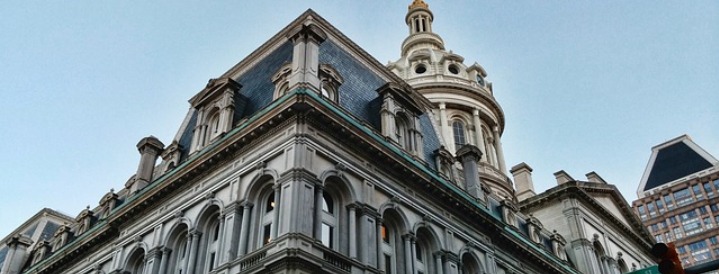2025 Lexington Visitors Guide
Known as the horse capital of the world, Lexington, Kentucky, is the heart of America’s Bluegrass region. The second-largest city in Kentucky, Lexington is the home to the Kentucky Horse Park, the Keeneland racecourse and the Red Mile racecourse.
 The city was founded in June 1775 in Virginia 17 years before Kentucky became a state. A party of frontiersmen led by William McConnell camped on the Middle Fork of Elkhorn Creek at what is known today as McConnell Springs. Upon hearing of the colonists’ victory in the Battles of Lexington and Concord, on April 19, 1775, they named their campsite Lexington after Lexington, Massachusetts, but the danger from Indian attacks kept the permanent settlement from being established for another four years. In 1779, Col. Robert Patterson and 25 companies from Fort Harrod erected a safe house; cabins and a stockade were built, which established the first fort in the area.
The city was founded in June 1775 in Virginia 17 years before Kentucky became a state. A party of frontiersmen led by William McConnell camped on the Middle Fork of Elkhorn Creek at what is known today as McConnell Springs. Upon hearing of the colonists’ victory in the Battles of Lexington and Concord, on April 19, 1775, they named their campsite Lexington after Lexington, Massachusetts, but the danger from Indian attacks kept the permanent settlement from being established for another four years. In 1779, Col. Robert Patterson and 25 companies from Fort Harrod erected a safe house; cabins and a stockade were built, which established the first fort in the area.
The town of Lexington was established in 1781. Kentucky was split from Virginia in 1792 to form a commonwealth, which became the 15th state in the union. Lexington was incorporated as a city in 1832. It was the center of activity for Kentucky and became the home of Kentucky’s first newspaper, The Kentucky Gazette, in 1787.
Horse racing in downtown Lexington was common until 1788 when town leaders prohibited the sport from the town’s thoroughfares. In 1789, Lexington’s first racecourse was established. Racing at the Red Mile began in 1875 and Keeneland opened in 1936.
By 1820, it was one of the largest and wealthiest towns west of the Allegany Mountains, with the name “Athens of the West” due to its culture and lifestyle.
Lexington was one of the leading manufacturing centers of the early West and was the center of the production of hemp goods, nails and gunpowder, and the site of cotton and furniture factories, breweries and distilleries.
An educational Mecca in the 1800s, Lexington developed a broad range of educational opportunities based on programs in liberal arts, medicine, law, education, and agriculture. During the Civil War, it not only became a prized possession alternately held by both the North and South, but the presidents of the Union and the Confederacy both had close ties to Lexington.
Lexington Attractions & Recreation
The interactive science exhibits at Explorium make learning fun for all ages. If you love history, visit Mary Todd Lincoln House, the first site dedicated to a first lady. If you are in town for a campus visit, you can get to the University of Kentucky. If you are a sports fan, visit Wildcat country for football at Commonwealth Stadium and basketball at Rupp Arena. Head to American Saddlebred Museum and Hall of Champions and learn how the Horse Capital of the World got its name at Kentucky Horse Park.
Downtown Lexington has seen a recent building and revitalization boom. Most of the new projects are built on the sites of former tobacco warehouses. Examples are 500’s on the Main, new residential condos and commercial properties along Main Street; the Fairmont on Main; the Lofts at Gratz Park; Center Court; South Hill Crossing; the Blackhorse at Gratz Park; and The Woodlands.
Some of the sites to see here include the obvious: horse farm tours where visitors are able to meet past and future Kentucky Derby winners and get a behind-the-scenes look at the multi-billion dollar thoroughbred industry on personalized horse farm tours.
Kentucky Horse Park is a 1,200-acre farm complex that includes a museum with films and interactive exhibits, a working farm tour and a daily parade of breeds, horse-drawn carriage tours, and horse rides.
Some other notable sites include Lexington Walk and Bluegrass Country Drive where tourists can explore historic downtown and Lexington’s scenic byways.
Museums include the International Museum of the Horse, the Headley-Whitney Museum, basketball at the new University of Kentucky Basketball Museum and the Aviation Museum.
Additionally, there are bourbon distilleries including the makers of Wild Turkey; restaurants featuring Bluegrass fare country foods and Derby Pie; bed and breakfasts; Civil War sites, Appalachian arts, and crafts; some of the nation’s most prolific hand-weaving studios; historic worship sites including 230 churches, synagogues, and mosques; historic homes of Lexington; Jazz, Blues and Folk performances at the downtown favorite, Cheapside Bar & Grill.
Oscar’s Piano Bar is a great place to spend a relaxing evening listening to some jazz and Natasha’s downtown on Esplanade is becoming a spot for jazz.
Outdoor recreation offers more than 3,000 acres in Fayette County designated as parks. The four largest are Jacobson Park, Masterson Station Park, Shillito Park and Woodland Park. The area also offers 15 public and semi-private golf courses including the Pete Dye-designed championship-caliber Kearney Hill Links. There’s also bird watching at Raven Run Nature Sanctuary or the Daniel Boone National Forest, perfect for fishing, canoeing or boating.
Lexington has a plethora of performing arts for a city of its size including a professional orchestra, the Lexington Philharmonic, and numerous theater groups. The Actors Guild of Lexington has a long history of providing compelling contemporary theatre. Both Lexington Ballet and Kentucky Ballet Theatre offer full seasons of dance. Lexington Children’s Theatre, Kentucky’s official state children’s theatre, has been staging productions since 1938. Touring groups present Broadway shows and musicals at the restored Lexington Opera House.
In late summer, Shakespeare in the Park presents outdoor performances at the Arboretum.
Rupp Arena often hosts large concerts of country, pop and rock acts throughout the year. The Festival of the Bluegrass, held annually at the Kentucky Horse Park Campgrounds, is the largest of its kind in the world.
Lexington is the home to the Lexington Legends, Class A minor league affiliate of the Houston Astros; Lexington Horsemen, indoor football; the University of Kentucky fields 22 varsity sports teams, of which the most famous is the men’s basketball team.
Also, Lexington has been selected to be the site of the 2010 World Equestrian Games.
>
Lexington Arts
The Lexington Public Art Commission is a civic organization dedicated to the presentation of public art in all its forms. The commission provides a formal art presence for the residents by selecting sites for sculpture and art forms, selecting artists, overseeing projects, developing programs in art education and establishing an exhibit schedule for the Lexington Public Art Commission Gallery. Among the finer points to living in Lexington is the Lexington Public Art Commission, which works to present public art in all its forms and provide a formal art presence for the residents of the city and enhance Lexington’s image throughout the region in terms of the visual arts.
In addition, the Commission supports a variety of initiatives promoting public awareness of the positive value of diversity in Lexington.
The Lexington Public Art Commission was established in 1985 by the City of Lexington for the purpose of developing a cohesive public art program. The Commission consists of nine members, who serve on a volunteer basis.
APAC encourages community participation in the Public Art program.
